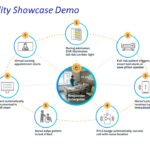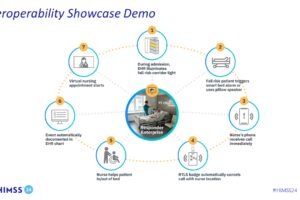The previous article in this series laid out key criteria for choosing a digital solution to clinical problems. We’ll continue with some other less known, but still important, criteria in this article.
In addition to the traits mentioned in the previous article, several others were cited by Christine Vogel, lead nurse educator at UbiSim:
- Ease of use: the vendor needs to bring in user experience (UX) designers and subject-matter experts.
- Flexibility: Because no two clinical sites are quite alike, the technology should be easy to adapt to each site.
- Accessibility: People with different physical and intellectual abilities should find the technology agreeable.
Dr. Mark Stephan, chief medical officer of Equality Health, warned that technologies have ripple effects that are often unanticipated. The technology must be evaluated within the entire system, with the ultimate goals of clinicians and patients in mind.
Examples of such system-wide criteria were offered by Dr. Khaliq Siddiq, chief medical officer at Clever Care Health Plan. Consider the need for training on new tools, costs, resource allocation, how the tool fits in with organizational policy and regulations, interoperability, and integration with existing infrastructure.
He also warns about effects on other team members of changing a clinician’s practice. For example, “a change in how a clinician charts patient information can have significant impact to the billing and coding team downstream. In a larger healthcare system, the clinical and operations pieces may not be fully in sync.
“Another great example,” Siddiq writes, “is a clinician’s decision to adopt voice recognition software. From the clinician’s perspective, this is a straightforward and well-intended solution, but the organization must consider compliance, interoperability, and patient flow.”
Stephan also suggested that technology too often isolates its users. It would be useful to build connections between clinicians and operations instead, and encourage them to work together.
Dr. Kate Behan, chief medical officer at Arcadia, reminds organizations to consider relative costs and revenues. Can the technology enable more earnings in value-based care contracts? In other words, does it support workflows that reduce unplanned admissions and lower medical costs? If so, it validates a return on investment as well as benefitting patients.
And remember costs to the patients as well, she says. Will they incur additional costs, such as a higher copay, as a result of the technology?
Delve into payment details as well. For example, can the technology be billed for use in virtual and in-home settings?
In summary, she writes, “This comprehensive evaluation approach ensures that the chosen digital technology provides value to the patient, positively affects patient outcomes, is accessible to all patients that may have an unmet need, does not impose extra burdens on clinicians, and enhances clinicians’ ability to care for patients. Additionally, the solution should scale as needed and be financially viable for all stakeholders involved.”
Dr. Colin Banas, chief medical officer of DrFirst, points out that budgets are getting tighter at clinical sites, so they are scrutinizing each new technology more closely. Ironically, while the increased salaries required for staff these days reduce the money available for technology, the right technology can reduce the burden on staff and make them more efficient.
What Do Clinicians’ Fears Spring From?
The professionals who are still in clinical settings are probably worried—or at least curious—about how the digital and AI revolution will change their careers, their workflows, their compensation, and their relationships.
Siddiq addresses their reasonable fear of the unknown. He writes, “Clinicians typically rely on evidence-based information to make decisions. However, this level of certainty is rare in new tools and technology. Clinicians need to understand the need to implement some solutions without having everything figured out.”
Dr. Kate Behan, chief medical officer at Arcadia, refers in email to fears around “autonomy,” writing, “Clinicians are fearful that their ability to exercise their full clinical expertise is waning, especially with emerging technologies such as AI and decision support tools.”
Melanie Russo, DMD, a provider for virtual-first care network Dentistry.One, assures clinicians that digital tech is an extension of their work, not a replacement for it. Dentistry.One offers the convenience of on-demand consultations, a feature healthcare consumers have come to expect. AI at Dentistry.One helps drive more qualified referrals for in-office dental visits, saving valuable time for hands-on treatment.
Cindy Koppen, chief nursing officer at care.ai, sees some staff fearing surveillance as well. Explain to them the opportunities to improve care and to save time on non-productive tasks.
Siddiq says that some clinicians have an inherent distrust of operators and administrators. He writes, “Organizations can overcome this distrust by getting clinicians involved early in the process, so that they feel that their input is considered. Implementations typically fail because clinicians don’t fully embrace the change and offer passive resistance or create their own workarounds. Organizations need to pay attention to the quiet individuals—silence does not equate to acceptance.”
Dr. Pallabi Sanyal-Dey, director of clinical operations at LeanTaaS, recommends that managers seeking new solutions look for allies in their own IT departments. She says, “IT staff might feel burned out and know they need something different.”
These criteria can help you evaluate technology—but what about the real-life context for adopting it? What do you need to know about the vendor and the deployment process? The final article in this series addresses those points.













